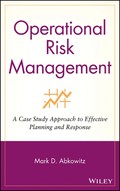One always has to be careful about information released on April Fools’ Day but in 2011 an important pieces of safety information from the United States was released – a video message from the Chemical Safety Board (CSB). A reader also pointed to a set of OHS case studies from the University of Massachusetts Lowell (UMASS) released in January.
Twelve months after the Tesoro Refinery fire in Washington in which seven people died, CSB is continuing its investigation but has released a video message, by Chairperson Rafael Moure-Eraso, that is confronting and displays the exasperation of safety regulators.

